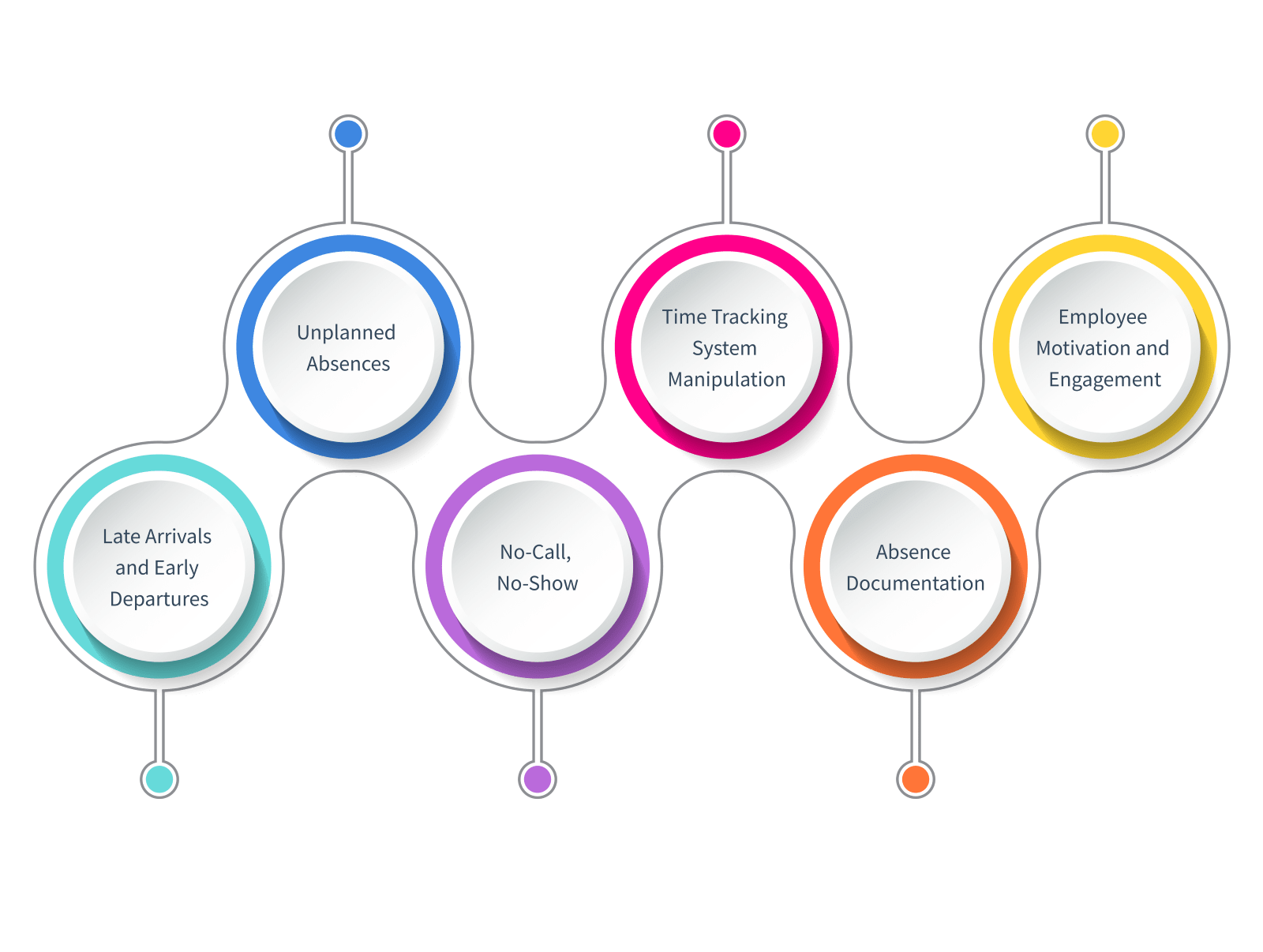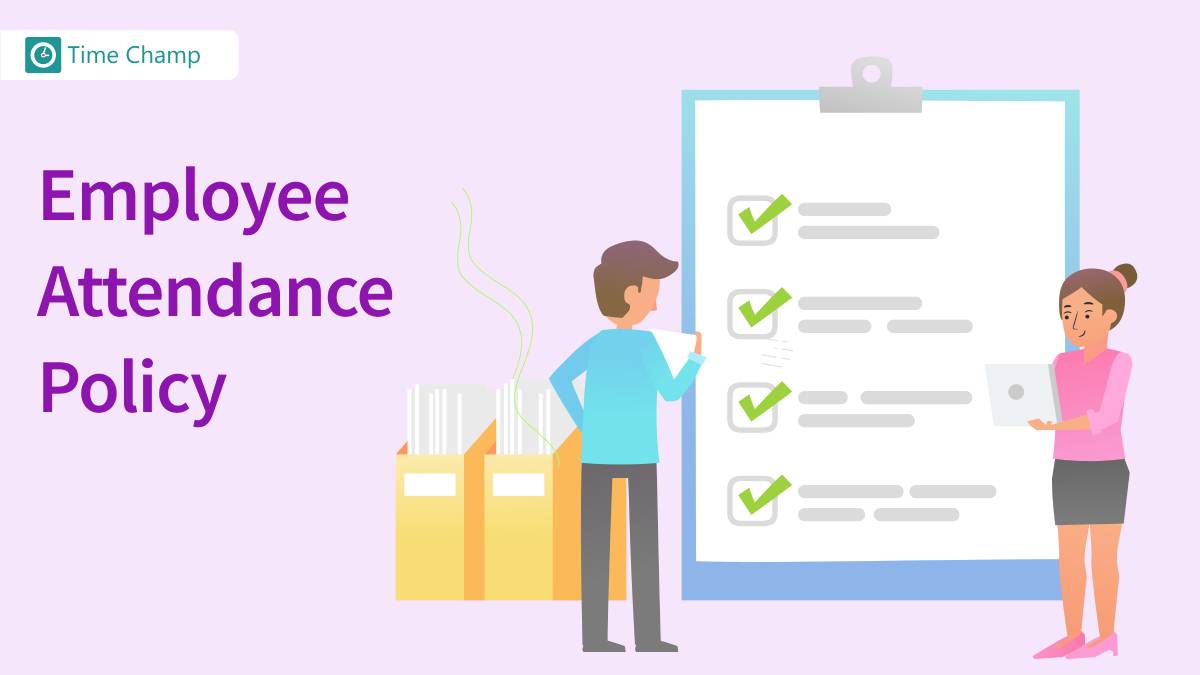Have you ever thought about how to improve workplace productivity and reduce attendance issues that can benefit your team? Managing your employee attendance system properly can bring great results. A combination of the right tools and clear policies helps things to run smoothly and keeps the employees motivated.
Curious to know how? There are several effective ways to handle attendance management.
In this article, we will show you how to manage employee attendance, challenges, and the usage of tools that can make tracking easier and more reliable.
What is Employee Attendance Management?
An attendance management system is a tool which assists the companies to record the times when the employees come to work, leave work, and are on vacation or sick days. It can be done manually but most companies use automated systems to speed up and make the process more accurate. This system makes it easy for companies to record attendance, and manage payroll and attendances issues.
Is Attendance Management System Really Important?
Yes, it is important. An attendance management system makes sure that businesses can monitor the people who are working and the ones who are not. The system helps to prevent confusion that happens during workplace operations. Without an accurate tracking tool, projects get delayed, paychecks are wrong, and the managers struggle to track missing employees.
When used correctly, a system provides accuracy and fairness in operations. A good tool helps the managers to plan better, reduces employee stress, and ensures fair treatment for all staff members.
Pros of Attendance Management
The key advantages of having an Attendance Management System include eliminating mistakes, having an accurate payroll, saving time and simplifying the process of tracking employee attendance.
some of the pros include:
Boosts employee productivity
Employee attendance tracking systems help to improve work efficiency because they make employees more aware of their time. Effective tracking helps the employees to stay on task and ensures work is done on time. As a result, they finish tasks faster, and work output increases, which benefits the business.
Reduces absenteeism and tardiness
A good attendance system will assist you to identify trends such as being absent too frequently or arriving late. If the attendance is recorded correctly, then the employees are likely to report to work on time and even miss fewer days whereas it helps in reducing both absenteeism and tardiness.
Helps in building trust and fairness
Employees feel their work environment is fair when all employees receive equal time tracking methods. A well-defined attendance system ensures the same rules for all employees, and it creates trust between staff members and management. The system prevents both unequal treatment and confusion among employees in the workplace environment.
Simplifies payroll, project tracking, and compliance
An attendance system keeps track of when employees start and finish work. This makes it easy to compute their remuneration on the hours worked. It also helps the managers to monitor the development of projects and ensure that the tasks are completed within the specified time.
It also helps the companies to follow labor rules, like paying overtime or managing the leave correctly, which avoids legal trouble.
Looking for an easy way to manage attendance?
Get started with Time Champ today!
Signup for FreeBook DemoCommon Attendance Management Challenges
Attendance management can be quite challenging, especially with the use of manual procedures or old systems.
Below are some of the issues that businesses have with the management of attendance:

Late Arrivals and Early Departures
Late arrivals occur if the employees fail to arrive at work on time and early departures occur if they leave earlier than their closing time. They can both break the workflow and cause delays, thus adding more pressure to other team members. By tracking the attendance properly, employers can address these issues quickly and ensure that work continues smoothly without interruptions.
Unplanned Absences
Unplanned absences are the cases when the employee does not notify the manager about his/her absence from the working place in advance. These are normally caused by sudden illness or emergency family matters. Because they are unannounced, they can interfere with the team’s workflow, and that will make it difficult for the co-workers to organize their tasks.
No-Call, No-Show
No-Call, No-Show happens when an employee does not come to work and doesn’t inform anyone ahead of time. There is no message or no call, just an unexpected absence from the employee. This sudden absence can delay the tasks and put extra pressure on other team members who have to handle more work without warning.
Time Tracking System Manipulation
This happens when the employees find ways to trick or misuse the attendance system, like asking a coworker to clock in for them or logging the false hours. It will lead to unfairness and loss of trust because some people get paid for times they didn’t actually work. Over time, this would hurt the company's budget and lower team morale.
Absence Documentation
The documentation system records when employees are absent and the reasons for their absence. It keeps clear and fair records for all types of leaves through accurate documentation. Properly documenting the employee attendance helps you to track attendance patterns and manage planned time off while avoiding work-related issues.
This process is important to keep things running smoothly at work and ensure fair treatment for all employees.
Employee Motivation and Engagement
Employee motivation and engagement can affect attendance. Unmotivated employees may take more unplanned leaves or arrive late, disturb the team, and lower productivity. Keeping the employees engaged helps to ensure that they follow attendance rules and helps the team success.
Effective Methods to Manage Employee Attendance
It is really hard to manage the employee attendance but with the right techniques it becomes much easier. These are some simple methods of monitoring attendance and making the team more dependable.
Set Clear Attendance Policies
There should be clear and simple rules regarding attendance. When the employees are well aware of what their roles are in the workplace it is easier for them to follow the rules. The system helps to maintain fairness throughout all operations.
The workplace rules need to be written using simple language to explain employee time off procedures and late arrival protocols, and sickness and emergency protocols. When written policies are clear, everyone maintains structure about the same information.
Use Automated Attendance Tracking Tools
Using automated tools like biometric scanners or time tracking software helps the employee to record attendance quickly and accurately. These tools will reduce the mistakes, save time, and make it easy to check who is present, late, or on leave.
For example, tools like Time Champ tracks the work hours in real time, which helps both the managers and employees to stay organized without doing everything manually.
Offer Flexible Work Schedules
The fact that the employees can work in flexible hours gives them an opportunity to balance their personal and work life. The workers can work on flexible hours at their convenience so long as they are able to do work assignments instead of 9-5 schedule. This will help them reduce stress and enhance their job satisfaction, and in most cases, generate better turn-ups and productivity.
Implement a Reward System for Good Attendance
Employers should reward regular and on-time attendance employees because such recognition boosts workplace motivation throughout the team. Small rewards like gift cards, extra free time, and public praise create strong motivation in employees. People who get noticed for their work performance show a higher level of dedication to staying focused on their tasks.
Address Attendance Issues Promptly
Fixing the attendance problems early helps to stop them from getting worse. If a worker is often late or misses work, talking to them soon shows that the company cares and wants to help. It also gives a chance to learn if they have personal problems and offer support, like flexible hours. This can keep the team working well and builds trust between the worker and the manager.
Encourage Open Communication
Open communication means letting the employees talk honestly about why they’re late or absent. When workers feel safe to speak up, then managers can understand their problems and help to fix them early. This helps in avoiding bigger issues and builds a workplace where people can feel respected and supported.
Manage Employee Attendance Easily Using Time Champ
Time Champ is the best employee attendance tracking tool which helps you to make your business operations simple. Time Champ records the work hours of employees from the moment they start until they log off, whether they are in the office or working remotely.
Time Champ also gives you a clear view of ongoing projects and keeps attendance records accurate and organized. It is designed to help the teams to stay productive, reduce manual work, and keep everything running smoothly in one place.
Try Time Champ free and see the difference it makes in your team’s productivity.
Signup for FreeBook DemoConclusion
To wrap it up, managing the employee attendance well helps to keep the workplace running smoothly and efficiently. A fair workplace is created when everyone understands the rules through time tracking tools and can adapt their hours and when managers address problems quickly. Good attendance recognition and open communication drive the team to stay focused on work and boost team motivation.
Frequently Asked Questions
An Attendance Management System (AMS) assists small businesses to monitor the time when employees clock in and out, time for breaks and leave. This can help save time, eliminate paperwork and it is helpful in preventing mistakes in the records of attendance. This can save time, reduce paperwork, and helps to avoid mistakes in attendance records. It also ensures that everyone follows the company’s schedule, which improves productivity and keeps the payroll accurate.
An attendance management system records the working hours both normal hours and overtime as well as late-coming and absenteeism they occur automatically. This minimizes overpay issues and ensures the employees are paid at fair rates and in time. This ensures the employees are paid fairly and on time.
There are various types of attendance systems that can be disparate in terms of nature of work involved. Here are a few of them which are most likely used;
Biometric systems (fingerprint or facial recognition)
Mobile apps
Web-based systems
Swipe card or RFID systems
GPS or geofencing systems
Yes. Many AMS platforms offer mobile or web-based features where remote employees can log in from anywhere. Some even use GPS to confirm their location or screenshots for accountability. This does not make it difficult for the small businesses to monitor hours of work and productivity even when the team is at different places.
Your small business must consider an Attendance Management System which is simple to use, cost effective and it has capabilities such as automatic time tracking and payroll. The system should work on mobile devices for remote workers. Check if the system offers good support and try a free trial to see if it meets your needs.





